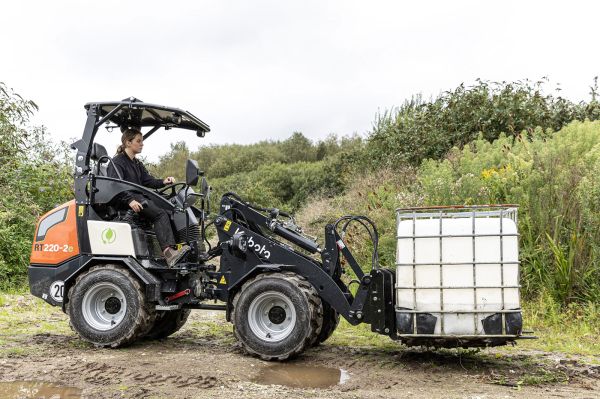Kubota launches battery-powered compact loader

Power for these electronic machines is supplied by a 48-volt (V) DC electrical system that is equipped, as standard, with a 260Ah lithium-ion battery pack. As an option, buyers can choose from two larger battery packs offering 390Ah and 520Ah capacities, offering longer run-times between charging. Typically, run times can be from two to eight hours, depending on the size of battery pack and the application. On-board charging affords a 230V/40-amp capability and a five-hour charge time, with a more powerful 60-amp unit available as an option, reducing the charge time for the standard 260Ah battery to just four hours.
For those able to make the most of a three-phase electricity supply, there are two models of 400V Super Charger available to further shorten the charging times – the most powerful 300-amp version can fully charge the largest 520Ah battery pack in just 90 minutes. An adaptor is also available to enable the RT ‘e’ models to be recharged via an electric car charging point.
Both Kubota RT ‘e’ models are equipped with an integral energy recovery system that automatically puts power back into the battery pack when the loader decelerates, or travels downhill, contributing to energy conservation.
The drive motor, which is fitted to the rear axle to transmit power to all four wheels is a 135-amp electric motor packing a 6.5kW punch. Travel speeds can be 0-5km/h; 0-12km/h and 0-20km/h. A more powerful 250-amp electric motor is used to operate the hydraulic system with a power rating of 12kW. Both electric motors are certified IP54, offering protection from dust and water, with in-built protection against over-heating. Operating weights are 2,200kg and 2,350kg, respectively, for the RT210-2e and RT220-2e when equipped with the standard 260Ah battery pack. Models differ only in their front-end configurations, and as a result, tipping loads in the straight-ahead position are 1,480kg for the RT210-2e, and 2,054kg for the RT220-2e. Compact in size, the RT series offers a low overall height of 2.3m, a minimum overall width of 1.04m (RT210-2e), and a maximum hinge pin height of 2.82m (RT210-2e). Either model can be specified in a cab or canopy configuration.




